Project Category: Multidisciplinary

Join our presentation
About our project
As the University of Calgary aims to reduce their GHG emissions to net-zero by 2050, there is an increased reliance on exploring alternative energy methods for electricity and heating on campus that produce lower GHG emissions than the current system. To help reach this goal, our project looks at examining the possibility of implementing a deep open-loop geothermal system to provide heat for the University. This system consists of an injection well which injects water at a high pressure into a reservoir, allowing the water to utilize the earths natural thermal energy before returning to surface at a higher temperature. This high temperature water would then be integrated into the current Centralized Heating and Cooling Plant (CHCP) to provide additional heat to the closed-loop water system. Currently, the University generates its electricity using a natural-gas fired turbine and the exhaust gases from the electricity generation are directed to the waste heat recovery boiler for water heating. After being heated by the hot exhaust gases the water temperature is increased to around 205 ˚C before being cycled throughout the UCalgary main campus buildings to provide heat. The cold water return line temperature to the boilers averages around 160˚C. The two key parameters for our system are the relatively low temperature gradient in Calgary (30.5˚C/km) and the high temperature water requirement for the closed-loop water system.
With all this in mind, the team originally examined the idea of drilling two horizontal wells at a depth of 3000-meters subsurface at a location near the CHCP. In this design we focused on the reservoir characteristics, construction, drilling operations, economics, and feasibility. Based on our calculations, the design proposal can’t be directly implemented to the CHCP. Although we couldn’t implement a useful solution that would directly replace the current system, we are still presenting alternative methods to meet UCalgary’s 2050 net-zero GHG emission goal.
Meet our team members

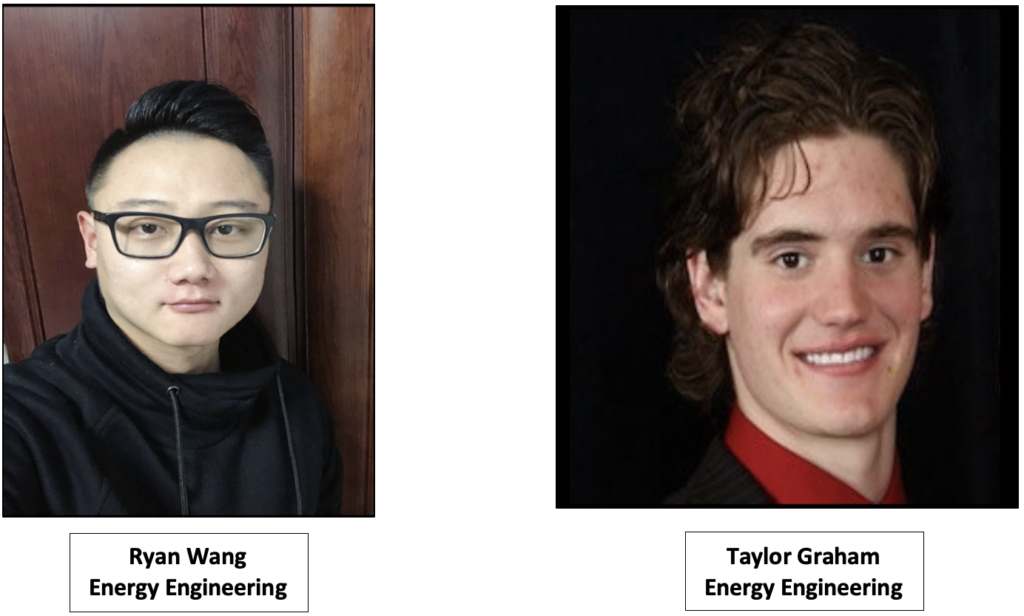
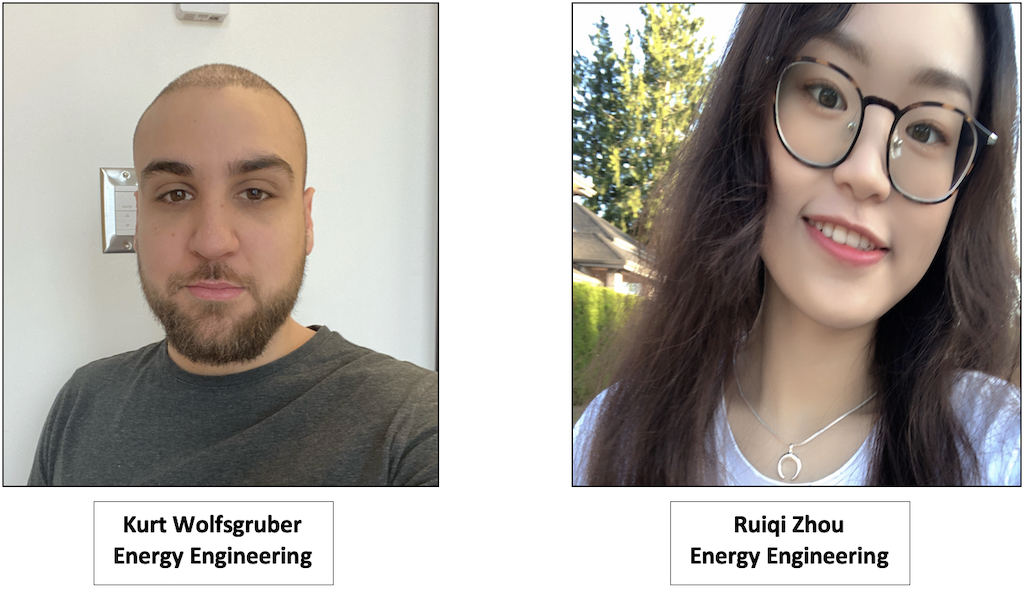
Details about our design
PRACTICAL ISSUES
The geothermal temperature gradient in Calgary is not ideal since its location is not within the “geothermal hot spots”. The original 3000-meter well depth design does not satisfy the necessary temperature value that the geothermal open-loop system would need to offset the current heating system. Drilling at this depth the reservoir would only produce a fluid close to 90˚C which is not a high enough temperature to be combined with the current closed-loop water system.
OPTIONS TO ADDRESS PRACTICAL ISSUE LIMITATIONS
OPTION A – HEAT PUMP
OPTION B – DRILL DEEPER
OPTION C – KEEP THE CURRENT SYSTEM
WHAT MAKES THESE OPTIONS SUITABLE FOR AN EFFECTIVE DESIGN SOLUTION
HEAT PUMP – Additional energy from the reservoir fluid is extracted by installing heat pump system. The components required for the heat pump system are a compressor, evaporator, expansion valve, condenser and secondary loop. A working fluid in the secondary loop must-have a lower boiling point than water. This allows the heat from the reservoir fluid to be absorbed by the working fluid in the secondary loop before being transferred to the cold water return line. Effectively reducing the temperature difference between the cold water return line and the hot water distribution line.
DRILL DEEPER – If we were to drill to ~7000-meters instead of 3000-meters the system would be able to produce a fluid at a much higher temperature (~210˚C). This would allow direct heat transfer to the current closed-loop water system to increase its temperature before cycling throughout the campus buildings to provide heat.
KEEP THE CURRENT SYSTEM – Do nothing. Since the closed-loop water system operating around the University is a high pressure-high temperature system, the options in replacing the system are limited. Permits and licenses for construction, drilling, and operation within the city limits challenge the feasibility of a geothermal system.
DESIGN OPTION CONSIDERATIONS
HEAT PUMP – Utilizing a heat pump system would allow the closed-loop water system at the University to extract more thermal energy from the reservoir. However, these systems come with additional capital cost considerations. Also, selecting the appropriate refrigerant to cycle through the heat pump system is another thing needed to be considered as you want a refrigerant with applicable thermodynamic properties, low cost, and low environmental impact.
DRILL DEEPER – Drilling deeper would seem to solve the issue of not producing hot enough water, however, this new depth introduces a suit of other problems. Mainly cost, drilling at these depths is extremely expensive. The extra cost is attributed to the increase in rig time due to the low rate of penetration as the formations are full of granite and other hard rocks. The chances of rig downtime from stuck pipe and other issues becomes much more prevalent at these depths. Naturally, deeper wells require more casing and cement, and an open hole completion would be out of the question due to the characteristics of the new reservoir. Fracking would likely be the only option for completing the wells.
KEEP THE CURRENT SYSTEM – With the installation of the cogeneration system in early 2012, the University’s system has provided relatively high energy efficiencies and have helped lower their GHG emissions. Although they haven’t been able to completely reduce the emissions to net-zero, this system still provides much greater value than the previous system or a geothermal system. Geothermal systems have high energy efficiencies but due to the limitations on our geographical boundary for the campus, this system would not work well for the University. The high initial capital investment, room for technology advancements, and the strenuous process for acquiring permits and licenses are reasons for considering keeping the current system as is.
SUMMARY
Geothermal energy is an effective renewable resource that produces far lower GHG emissions compared to traditional fossil fuels. However, due to the large capital cost and deep drilling requirements, a geothermal system would be unattractive for the University of Calgary’s Main Campus CHCP.
We ran into two main issues that impacted our original 3000-meter deep open-loop geothermal system solution. The low temperature gradient in Calgary and the high temperature water requirement. To find alternative solutions that would subside these issues we examined adding a heat pump system between the reservoir and CHCP, we looked at drilling deeper to achieve a greater reservoir fluid temperature, and we looked at leaving the current system as is.
We concluded that the best option would be to leave the system alone until a more useful energy advancement in geothermal energy occurs to allow direct integration of a geothermal system to the closed-loop water system at the University. In saying this, we still believe that geothermal energy is the best renewable energy resource the University should implement at some point as its small area requirement and high efficiencies are a more logical on campus solution to cleaner energy compared to solar panels or wind turbines.
Partners and mentors
We want to thank the many people who helped us with this project. Our Academic Advisor Roman Shor helped guide us through the process with patience and geothermal expertise. Our Industry Sponsor Travis Milnes provided excellent advice and resources throughout our project. Our consultation with Stuart Ross from Precision Drilling was invaluable for the drilling operations part of our project. Earl Badger from the Energy and Utilities Department at the University detailing the current CHCP and closed-loop water system. Additionally, we’d like to give a special thanks to Dave Diachok and Scott Luger from Cathedral Energy Services for their assistance in providing the directional drilling plan.
Our photo gallery
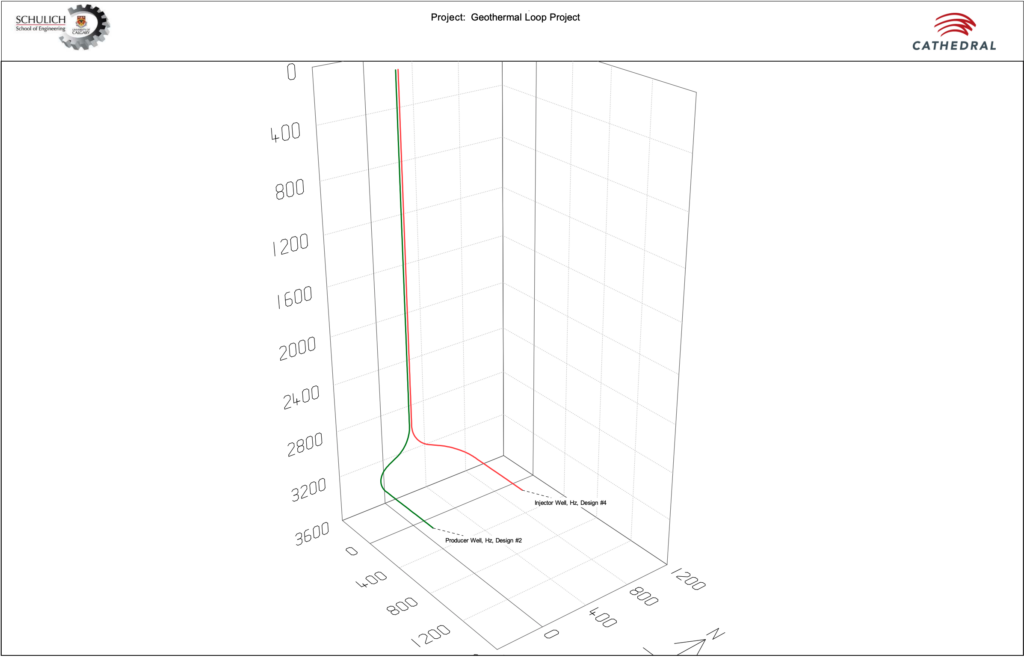
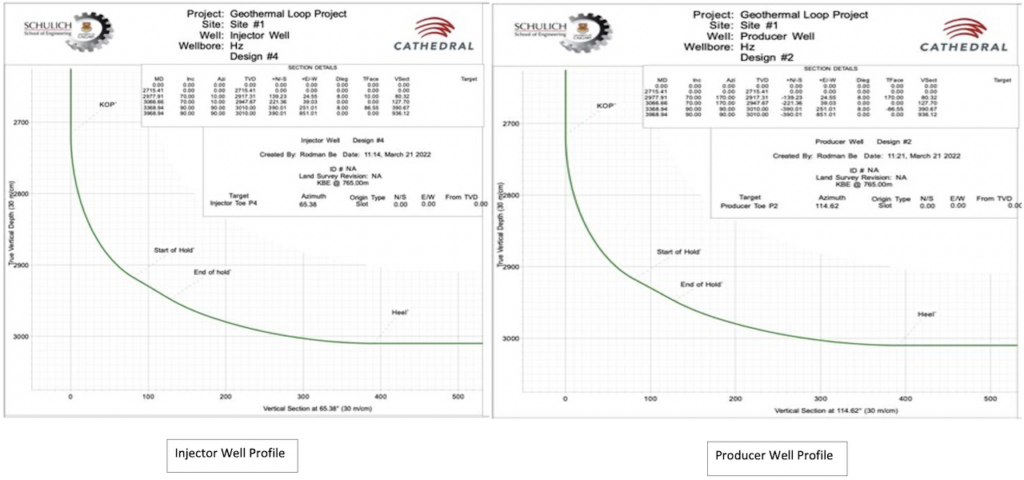

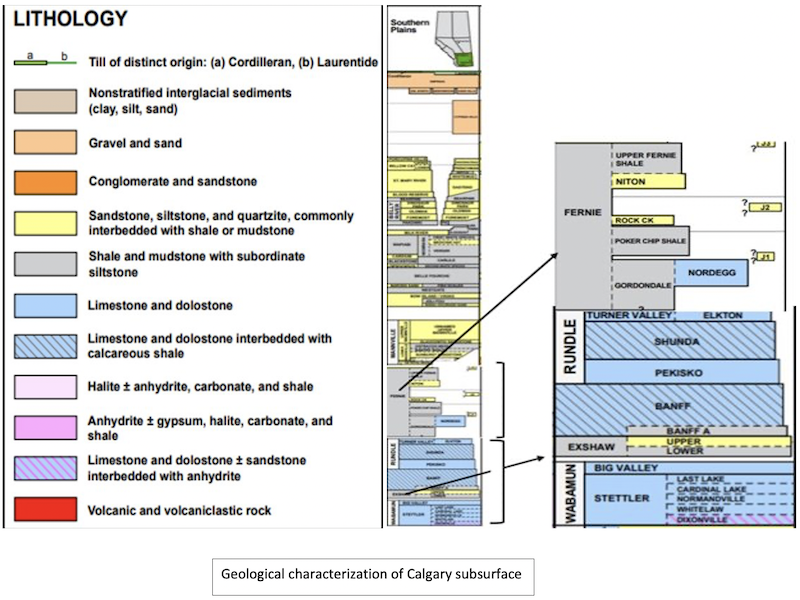
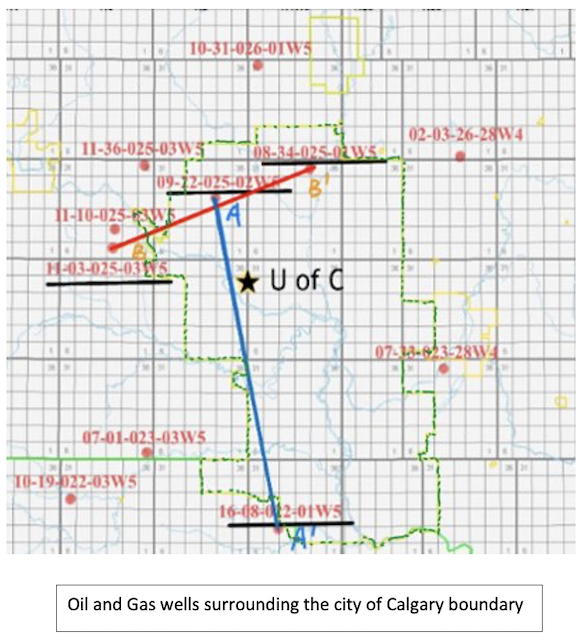
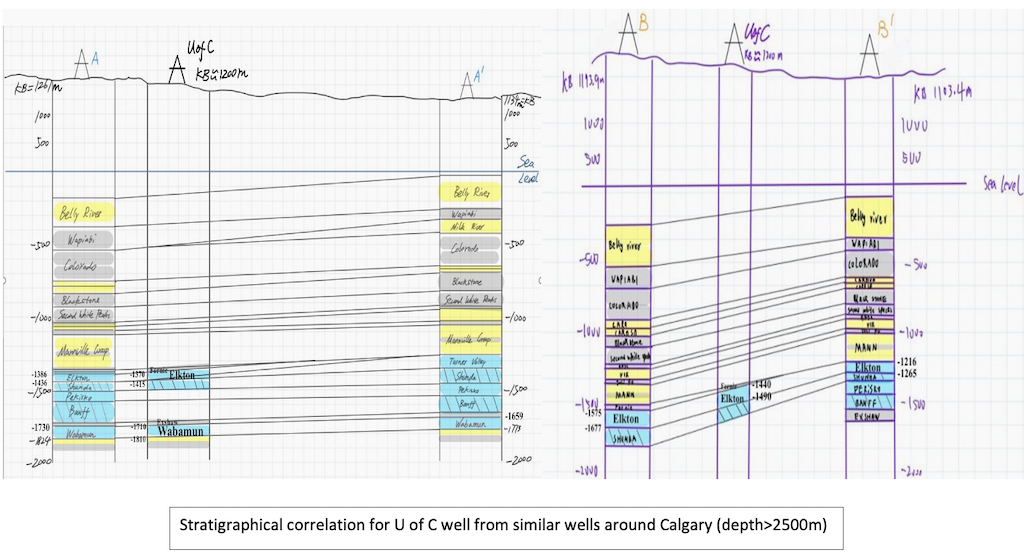
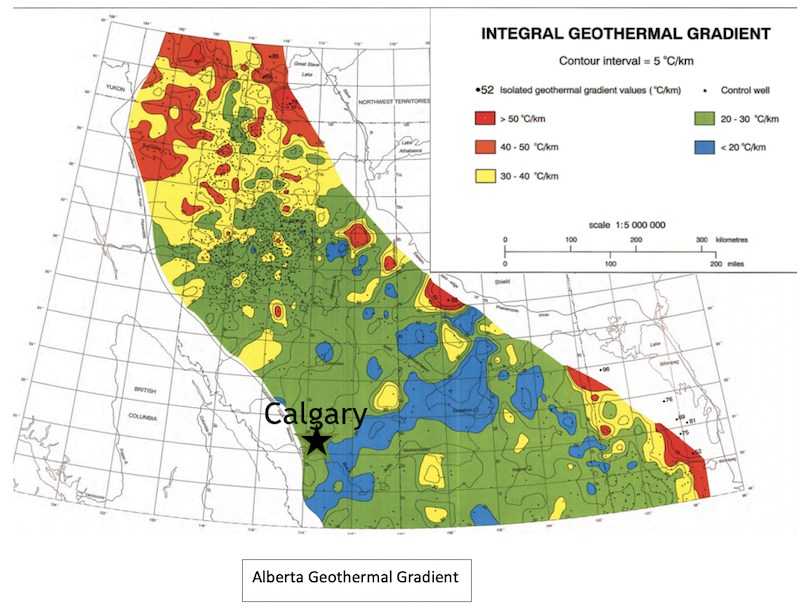
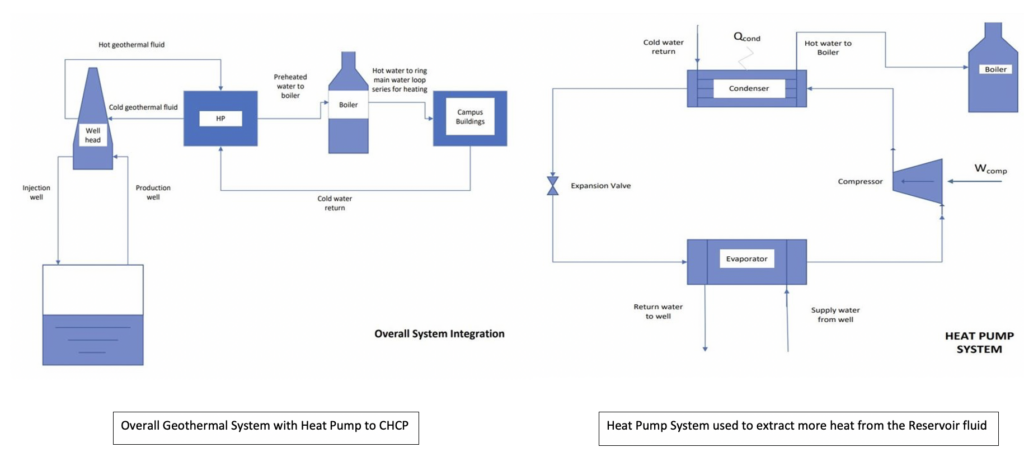
References
- “Campus maps and room finder,” University of Calgary, [Online]. Available: https://www.ucalgary.ca/about/our-campuses/campus-maps-and-room-finder. [Accessed December 2021].
- S. Bachu, “Chapter 30 – geothermal regime,” Alberta Geological Survey, 13-Sep-2020. [Online]. Available: https://ags.aer.ca/atlas-the-western-canada-sedimentary-basin/chapter-30-geothermal-regime. [Accessed: 03-Mar-2022].
- J. Banks, “Deep-Dive Analysis of the Best Geothermal Reservoirs for Commercial Development in Alberta: Final Report,” Earth and Atmospheric Sciences, 2019. [Online]. Available: https://www.cangea.ca/uploads/3/0/9/7/30973335/2288_deep_dive_analysis_of_best_geothermal_reservoirs_for_commercial_development_in_alberta_-_final_report_20170404.pdf. [Accessed: 03-Apr-2022].
- “Alberta table of formations 2019 – alberta energy regulator,” Alberta Energy Regulator, 2019. [Online]. Available: https://static.ags.aer.ca/files/document/INF/Table_of_Formations_2019.pdf. [Accessed: 15-Mar-2022].
- “Renewable energy,” Renewable Energy | Green Home Technology Center, 2019. [Online]. Available: https://greenhome.osu.edu/renewables. [Accessed: 03-Apr-2022].
- Alberta Geological Survey (2019): Alberta Table of Formations; Alberta Energy Regulator, URL <https://ags.aer.ca/publications/Table_of_Formations_2019.html> [Accessed:02-December-2021].
